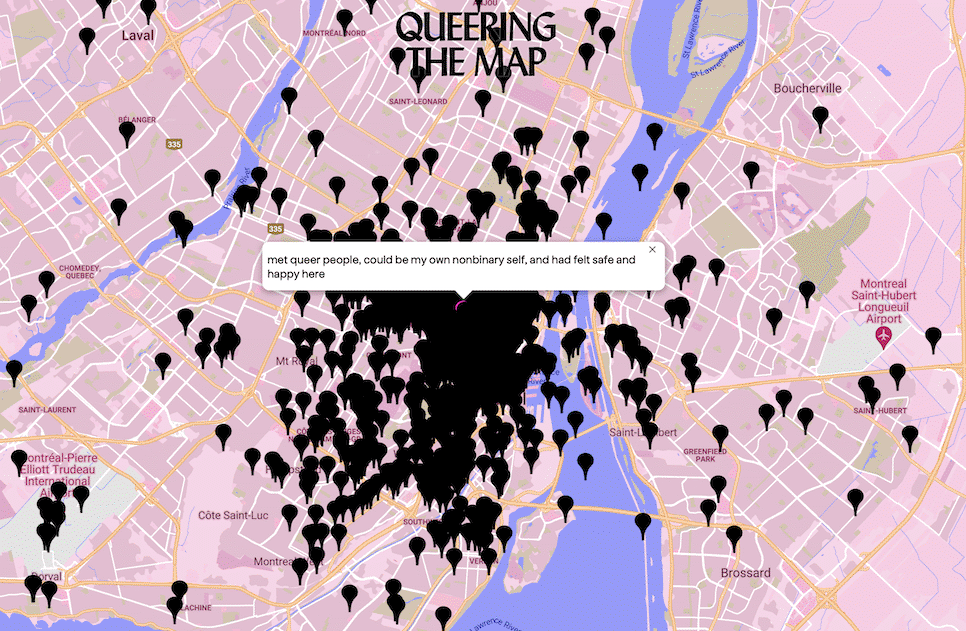Interactive database Queering the Map reveals the queer experiences that are everpresent yet invisible in the physical world
In May of 2017, Lucas LaRochelle launched Queering the Map, a crowdsourced digital archive for queer experiences, which now features over 20,000 written entries from around the world.
The idea for Queering the Map came to LaRochelle while passing a tree where they had met and shared numerous experiences with a long-term partner. Reflecting on their own mental map and queer experiences led to the concept of a database where anyone could anonymously share their own experiences with a pin on the space where they’ve occurred. “The aim of the project is to make legible memories, histories and moments of queerness that would otherwise disappear,” said LaRochelle to CBC Arts in 2018.
Submissions are entered as pins on the map and comprise feelings, events and stories. Ranging from love, sex, heartbreak, and happiness they reveal an honest image of queerness relative to the physical spaces it occupies. “Our first date. We talked for hours and you kissed me outside my apartment. 2 years later and I still think about you” shares a submission pinned in the Plateau-Mont-Royal. In February 2018, engagement shot up after the map went viral on Facebook, sparking growth from around 660 pins to 6,500 pins in just three days and garnering attention worldwide.
During their time as a resident of the Fine Arts Reading Room (FARR) at Concordia in Design and Computational Arts, LaRochelle created the map with a little help from friends and tech consulting from the FARR Lab. LaRochelle noted, “I was primarily inspired by Tumblr in the early 2010s, which is one of the places where I for the first time saw queer and trans people expressing themselves on their own terms vis-a-vis text and image.” For LaRochelle and those they connected with online, anonymity helped form the digital landscape into a place where identity and queerness could exist at ease and as intended by each user. Anonymous submissions on Queering the Map serve to mirror the positive effect a platform which universalizes user presentation has had for online queer community.
After five years online LaRochelle is seeing how a queer approach to space develops after its first steps and successes. With the project’s expansion to the global scale, it must reckon with how the growth of the space we inhabit conflicts with a core facet of the Map: the intersection between queer liberation and decolonization.
Its moderation system, which vets submissions for hate speech, spam, and personal information shows where they must adapt, given how moderation is currently based in Montréal but overlooks entries coming from global, specifically non-Western, perspectives.
“Rather than myself and most of my friends [who do the moderation] who are located in the western context, a better moderation system would be moderated by people who have more knowledge of that specific culture and context,” said LaRochelle, referring to a localized moderation system across geographic regions.
Queering the Map has since used event opportunities to explore the project’s themes and questions in a concrete space. In 2019, Concordia’s 4TH SPACE hosted Queering the Map: On_Site, a public exhibition which sought to embody how it’s themes interact in a complex way when brought off the digital platform. The collaborative event held curated workshops and performances including digital self-defense for marginalized communities, a latin dance partner class, counter-cartography through beadwork, self-reflection through hip hop, and mapping desire through movement.
With potential for a podcast and docu-series, there is much on the horizon for Queering the Map. Still, it’s impact in the past five years can be seen on the site itself across the thousands of heartfelt contributions which connect the queer community across the map.
Check it out or submit your own queer experiences at www.queeringthemap.com




